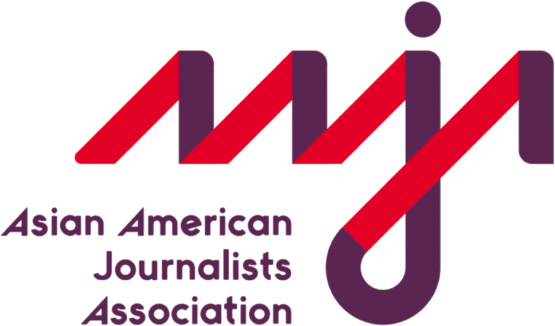Feature
 “I had no knowledge of Asian American history growing up,” Chan, who graduated in 1997, said.
“I had no knowledge of Asian American history growing up,” Chan, who graduated in 1997, said.
Published August 25, 2021

Victoria Badua Lagula (left) and her daughter JoAnn Fields (right) sit in Victoria’s Secret Garden, Lagula’s garden. Field’s is a prominent figure in the Filipino community and got the bug for community activism from her mother. She said ethnic studies is a step in the right direction, but it's not nearly enough to encompass the whole history. Photo: Brittany Cruz-Fejeran.
Nearly a quarter century after he graduated from Niles North High School in Skokie, Illinois, Albert Chan returned to one of its classrooms — this time as a social studies teacher. His goal: to offer students a curriculum he never had access to.
“I had no knowledge of Asian American history growing up,” Chan, who graduated in 1997, said. “There was never a space for me to explore my own identity, microaggressions, and different acts of discimination and stereotypes and history of people who look like me.”
Chan co-created an Asian American Studies elective in 2017 and now teaches the class at two schools in Illinois. Yet, starting a new curriculum was challenging and some of his colleagues were completely against the course. It took Chan and his collaborators thirteen years to get it off the ground.
Now, legislators are clearing a path for more classes like his to pop up across the country.
In early July, Illinois Gov J.B. Pritzker signed the Teaching Equitable Asian American Community History (TEAACH) Act into law. The act requires that every Illinois public elementary and high school include a “unit of instruction studying the events of Asian American history” beginning in the 2022-2023 school year.

Other states around the country, like Minnesota and New York, are eyeing similar pieces of legislation concerning Asian American studies. At least nineteen states and D.C. have considered some sort of K-12 ethnic studies legislation, according to a February 2021 report from the national Comprehensive Center Network.
The TEAACH Act is moving forward at a time when critical race theory is facing pushback from conservative activists and school boards across the nation. An April survey showed that one-third of Asian Americans are fearful of becoming a victim of a hate crime, a sense of unease perpetuated by the rise in anti-Asian harassment across the country.
Legislators and advocates backing the TEAACH Act hope more educators can have the opportunity to follow Chan’s lead, perhaps more easily and quickly than he was able to, and that the act will create more courses that teach tolerance towards communities of color.
In 2019, Chan began traveling to Niles West High School to teach Asian American Studies. That happened in part because there were no Asian American teachers in the school’s history department — yet more than one-third of Niles West’s student population is Asian.
Chan said coming up with a curriculum was a challenging process; there were no models for him to follow and few teachers who looked like him that could help.
“I didn’t really know what to do,” Chan said. “I didn’t know how to navigate the climate and challenge my colleagues, my former teachers.”
Those structural factors he experienced back then still exist today, he said.

Photograph shows a portrait of Yao Shên, friend of Imogen Cunningham’s and professor at the University of Hawaii in 1938. Source: Imogen Cunningham via Library of Congress
With many communities of color, the ratio of teachers compared to students of the same racial background is highly uneven. Asians comprise just 2.1 percent of America’s public school teachers, according to Department of Education data from 2018. That’s half of the percent of Asian students in public schools, which was 5 percent in the same year.
Black and Hispanic teachers are also underrepresented in public schools. In 2018, 15 percent of public school students were Black compared to 6.7 percent of public school teachers. The same year, 27 percent of public school students were Hispanic, compared to just 9.3 percent of public school teachers, according to data from the Department of Education
Educators have proposed ethnic studies curricula for decades. But for some, the work to get these courses off the ground is still in progress.
Ellen Somekawa co-founded the Folk-Arts Cultural Treasures Charter School (FACTS) in Philadelphia’s Chinatown in 2005. Students at the K-8 school participate in standard classes, in addition to folk arts classes, such as those on Chinese shadow puppetry or Mexican art, that allow them to learn about other cultures.
Though the school began operations sixteen years ago, its educators are still refining its social studies curriculum to make it inclusive, Somekawa said.
“There’s a process, and it’s not a quick one, figuring out how to teach any subject matter,” said Somekawa.
Somekawa believes that there will be a “very uneven” rollout whenever there’s an educational mandate involved. She says it takes time, expertise, and personal investment. Many schools may not have or offer the resources to help.
“On the other side of it is that you get to a point, where you feel like without a mandate, it’s not going to happen,” said Somekawa.
While some educators bring up the lack of resources or models for Asian American and Pacific Islander curricula as major barriers, others also point to the pushback ethnic studies courses receive — such as those that touch upon critical race theory.
In California, a state bill, AB-331, fell through the cracks when it got to California Gov. Gavin Newsom’s desk.
The legislation would have made ethnic studies a graduation requirement for high schools, but Newsom vetoed it in September 2020 stating that he felt schools were ill-equipped to teach the curriculum.
“This bill would require ethnic studies to be taught in high school at a time when there is much uncertainty about the appropriate K-12 model curriculum for ethnic studies,” he said.
After the veto, the state went on to finish a four-year battle to develop guidance for ethnic studies in high schools but left implementation up to individual schools. The California Board of Education approved that ethnic studies model curriculum in March 2021.
It is still unknown if AB-331 will be revived even after this model was approved.

Grove Farm, founded by George N. Wilcox in 1864, was one of 86 sugar plantations known to have operated in the Hawaiian Islands. Source: Library of Congress.

A cook who has been at Grove Farm for 45 years stands in the kitchen. Source: Library of Congress.
Other states like Hawaii are resistant to legislation because they view it as redundant. Education officials say the state had already integrated Asian Pacific American themes and history as a part of statewide education standards. The curriculum covers topics like Japanese internment camps and sugarcane plantations.

The Hirano family, left to right, George, Hisa, and Yasbei. Colorado River Relocation Center, Poston, Arizona. Source: Records of the War Relocation Authority

Catherine Natsuko Yamaguchi was a Red Cross instructor at Manzanar Relocation Center, Cal. Source: Ansel Adams via Library of Congress

Editor Roy Takeno reading a copy of the Manzanar Free Press in front of the newspaper office at the Manzanar War Relocation Center, CA in 1943. Source: Ansel Adams via Library of Congress
And while it’s unclear when the curriculum was established, the state’s Department of Education officials say it dates as far back as 2001. With what it considers an established Asian American curriculum, Hawaii has no plans to introduce further legislation.
In states where legislation has stalled, some teachers are taking matters into their own hands, creating their own curriculum with the blessing of their school administrators.
In Encinitas, California, San Dieguito Academy High School English teacher Ruth Pimentel Magnuson and English and journalism teacher Yoshi LeaVesseur did this with their own ethnic literature course.
They said they felt hunger from their students to read and learn something other than the likes of J.D. Salinger, author of Catcher and the Rye, and other white writers.

San Dieguito Academy High School English teachers Ruth Pimentel Magnuson and Yoshi LeaVesseur co-created an ethnic literature class that covers issues such as intersectionality and racial identity. The new class kicks off spring semester. Photo: Brittany Cruz-Fejeran
The Ethnic Literature course spans from migration policies, intersectionality and racial identity.
LeaVesseur and Magnuson’s course is at its infancy and has yet to face any major pushback from students, parents or the community on their course – except for one email from a skeptical parent whose child is not even enrolled in the course.
Despite the challenges with implementing Asian American studies across the country, many educators, residents, legislators and activists are still pushing for more initiatives like the TEAACH Act because they believe it’s essential in stemming the spread of anti-Asian sentiment in the country.
Learning about the history of Asian Americans and Pacific Islanders is a crucial step in understanding the reality of current racial inequity in the United States, said Frank Wu, the author of Yellow: Race in America Beyond Black and White.
“There’s all this history, that goes back to the Civil War, that even people who study history don’t know about,” Wu said. “It’s American history. This is real history. It was, and it’s been, neglected.”
“If you see this context, and if you understand it, then you have a way to process the Atlanta attack and all these other horrible incidents,” he said. “Asian American history is American history. People don’t realize Asians have been in America since before America was united.”
Some who grew up in U.S. public schools say an Asian American and Pacific Islander curriculum would have helped them better understand their identities.
“You know the story about the Mayflower,” said Jeff Le, a public policy strategist and partner at the Truman National Security Project who attended California public schools. “Why don’t you know the stories about all the other communities and how they got here?”
The only two Asian American historical events he recalls learning were the Chinese laborers on the Transcontinental Railroad and World War II Japanese internment camps.
“If you don’t have a curriculum it’s sort of like saying you’re not here and you’re not American,” Le said.
“For a very long time, until high school, I rejected my Asian American identity,” said Autumn Wong, a recent U.S. public high school graduate from West Palm Beach, Fla.

Autumn Wong in her hometown of Jupiter, Fla. Photo: Sydney Walsh

Jeff Le in Washington, D.C. where he currently lives. Photo: Sydney Walsh
“My only perception of my Asian American history was just the bullying and racism I received, as most Asian American kids do, in elementary and middle school.”
At the federal level, legislators are realizing that incorporating this education is key to addressing that sense of exclusion.
In response to the Atlanta shooting that left eight people dead, including six women of Asian descent, Congress reintroduced legislation in March to promote teaching Asian Pacific American history in U.S. schools in hopes to combat the rise in anti-Asian attacks that have been especially heightened during the COVID-19 pandemic.
Congresswoman Grace Meng (D-Queens), who introduced H.R. 2283, says Asian Americans have been poorly represented and often excluded from the K-12 system.
“Asian Americans have always been seen as invisible or as foreigners.” Meng said in a news release. “We have grown up with people questioning whether we’re American enough, and we’ve endured slurs and jokes about our appearance and our food.”
“Even if we were raised or born here, many still tell us to ‘go back to our country,’ and make ignorant and xenophobic remarks such as telling us that we speak English well,” she continued.
The measure is awaiting a hearing from the House Education and Labor Committee. If it passes, the bill specifically mandates the inclusion of Asian Pacific American history as a requirement of American history.
Its scope — like many bills of its type — is still limited. The legislation doesn’t specifically dictate what U.S. public schools need to be teaching.
That’s why proponents like JoAnn Fields, a San Diego resident and prominent member of the Filipino community, said while she thinks mandating ethnic studies is a move in the right direction, she believes it’s not enough to really reduce the spread of anti-Asian sentiment. She believes any initiative needs to go further than the classroom.
“They’re going to give us (Filipino history) a little paragraph,” she said when referring to ethnic studies.
While politicians continue to debate this policy, many children and young adults in Asian American and Pacific Islander communities will continue searching for their ethnic histories themselves.
“We need to tell our whole story,” Fields said. “And it’s disheartening that there even has to be a policy in place in order to get schools to teach ethnic studies.”
Brittany Cruz-Fejeran, Lucia Geng, Cassie Ordonio and Sydney Walsh are 2021 Voices students. Shalina Chatlani and Adrienne Shih edited the features team.
Sydney Walsh is a senior pursuing a BFA in photojournalism and minor in Spanish at George Washington University where she is a photographer for the GW Hatchet student newspaper and projects chair for GW’s chapter of NPPA.
Cassie Ordonio recently graduated from the University of Hawaii at Manoa with a bachelor’s degree in journalism and Pacific Islands studies. She currently interns at Honolulu Civil Beat covering city hall.
Lucia Geng is a rising senior at the University of Chicago majoring in Political Science and minoring in Human Rights and Near Eastern Languages and Civilizations.
Adrienne Shih is the audience engagement editor for national politics at the Los Angeles Times, based out of the company’s Washington, D.C. bureau.
Shalina Chatlani is a regional healthcare reporter for the Gulf States Newsroom, a collaboration between NPR and NPR member stations in Louisiana, Mississippi, and Alabama.
Southwestern College
University of Chicago
George Washington University
University of Hawai‘i at Mānoa
Feature





Virtual 2021





Apply
Become a fellow or editor
Donate
Support our impact
Partner
Work with us as a brand

The Asian American Journalists Association (AAJA) is a membership nonprofit advancing diversity in newsrooms and ensuring fair and accurate coverage of communities of color. AAJA has more than 1,500 members across the United States and Asia.